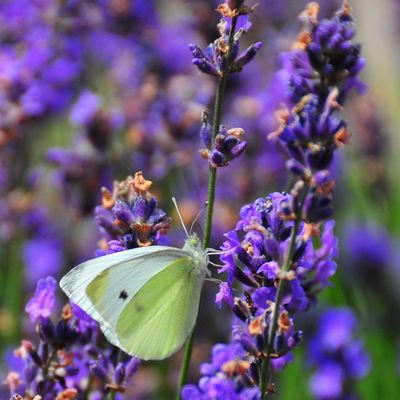Start the seeds 6-12 weeks before last frost and place the seed tray on a heat mat or in a warm location. Rather than a traditional potting mix, use a very light mix or fine vermiculite that drains very quickly. Place the seeds on the surface of the mix and sprinkle a light dusting of mix over the seeds (no more than 1/8"). The seedlings will germinate in 20-30 days. Make sure that the seedlings get sufficient water (mist daily), but do not let them stay wet. This is very important! Wet seeds will rot; seeds that are dampened daily will germinate.
The "professional" method of growing lavender is more involved and time-consuming but generates better results:
Put 2 tablespoons of dampened soil mix in a ziplock bag. Make sure it is only damp, and not wet (use 2 or 3 teaspoons of water). Sprinkle 20 to 30 seeds into the bag and mix it well. Flatten the bag on a counter and push most of the air out of the bag and seal. Place the bag in your refrigerator for 3 weeks. This process is called "Cold Stratifying" and helps to shock the seeds out of dormancy. After 3 weeks remove the bag from your fridge and sprinkle the contents onto the surface of the starting mix in your tray (or other container) as described above. Follow the instructions above and you should see germination in 2-3 weeks.
When your seedlings have several sets of leaves on them, plant them into their final location, but check them regularly to make sure they have not been knocked over by animals, or dislodged by rain. Once the lavender plants are settled in the ground they will grow slowly the first year, but most of them will bloom. By the next year you will have a splendid supply of lavender to plant into a hedge or use as a border for your perennial bed.
